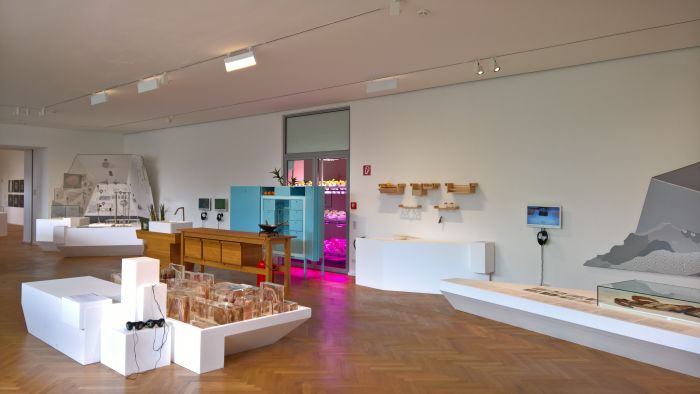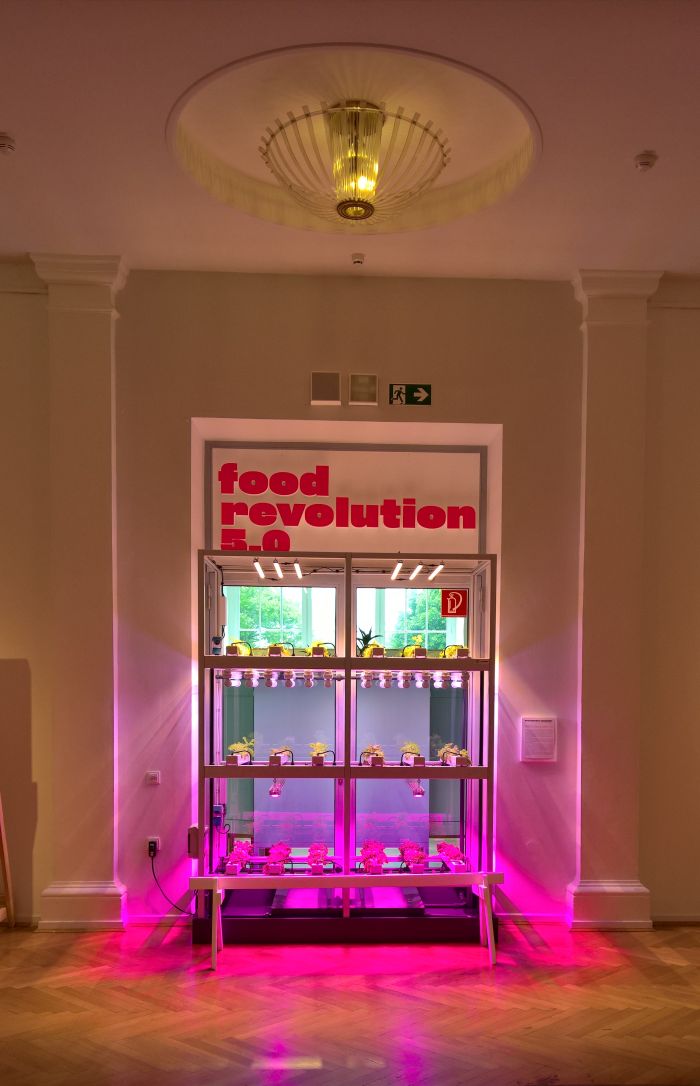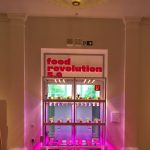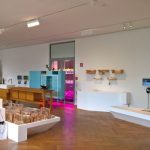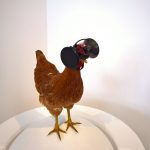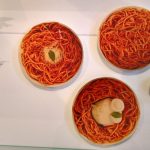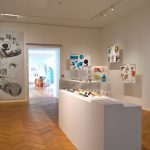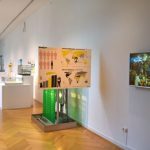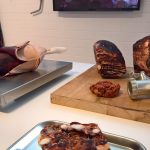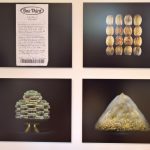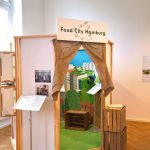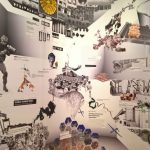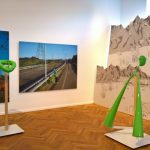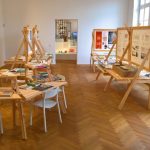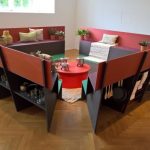Food Revolution 5.0. Design for Tomorrow’s Society at the Museum für Kunst und Gewerbe Hamburg
As the apostle Paul once wrote to the people of Galatia, “for whatsoever a man soweth, that shall he also reap.” The manifestation of that wisdom can be observed in the twisted reality of our contemporary farming and food production systems.
What we could, should, sow in order to reap a more sustainable and democratic future harvest, and for all the role our personal relationships’ to food plays in approaching such an answer, is explored in the exhibition Food Revolution 5.0. Design for Tomorrow’s Society at the Museum für Kunst und Gewerbe Hamburg.
Food Revolution 5.0.
There is something, well, frankly, perverse about the fact that an exhibition such as Food Revolution 5.0 is being staged in 2017.
Food is a basic necessity, we shouldn’t even have to discuss where it comes from, how readily available it is, how nourishing it is, how we consume it.
It just should.
But it isn’t.
The current state of both agriculture and our relationship to food is unsustainable. In that there can be no argument. They must change. That a museum for Kunst und Gewerbe – Art and Industry – should choose to tackle the question of how we can reach a balanced, democratic, sustainability, is eminently appropriate: for in art and industry one finds many of the problems, and obstacles, which need to be solved and overcome in answering that question.
To that end Food Revolution 5.0 discusses the four stages of the food production and consumption process – Farm, Market, Kitchen, Table – in context of some 30+ projects from international artists and designers.
A highly critical, opinionated, exhibition, Food Revolution 5.0 presents at times extreme positions, positions far outwith the conventional, comfortable or conceivable; and thus through avoiding getting caught up in the banality of specifics offers a platform for an open, honest, concentrated discussion on the basics of future food production, distribution and consumption.
Food Industry 4.0.
One reason for our current unhappy situation is arguably the move away from farming as a means of food production to farming as a source of profit. Although there is no reason why farming shouldn’t be a profit making industry, contemporary farming, at least in context of our northern society, has largely lost all connection to the food it produces. Be it through intensive farming, monoculture or the exploitation of far-off nations to produce food stuffs for us Europeans and North Americans, the focus on production for profit not only damages our domestic farming and food industries, but impacts socially, environmentally and economically on a global scale. While the distances over which we transport food not only impacts on the environment, and leads to questions over food security and fairness, but through the loss of concepts such as seasonality our relationship to food changes. For the worse.
Opening with a series of posters and videos which neatly and succinctly present relevant data concerning contemporary food production, distribution and consumption, data which graphically underscores just how out of kilter our current system is, Food Revolution 5.0 moves deftly on to explore how, if, can we achieve a fairer, more balanced and sustainable system?

Second Livestock by Austin Stewart. Virtual Reality for chickens, as seen at Food Revolution 5.0. Design for Tomorrow’s Society, Museum für Kunst und Gewerbe Hamburg
Food Industry 5.0.
Farming is in principle very simple. Crops and animals are planted. Crops and animals grow. Crops and animals are harvested. Harvested crops and animals are sold. Repeat.
Commercial industrial farming is also very simple. Produce as much as possible as cheaply as possible and sell it globally for as much as possible. What could possibly go wrong? No honestly, what?
The Cow of Tomorrow by Paul Gong, for example, 50% machine, 50% biotech, 100% freak, or Second Livestock by Austin Stewart, virtual reality glasses for factory farmed chickens which gives them the impression they are in more pleasing, outdoor, environments. And thus are more productive. Two delightful examples of why just because something is technically possible, one shouldn’t necessarily do it.
Beyond the farm gate, the global nature of contemporary food production, and for all the opaque, finance driven, geopolitically sensitive contemporary global food market, means that there are a great many whose food supply is precarious, situations outwith their control having the ability to negate it without warning: a position, as the collage Intimacy of Food and War by Isabel Mager makes brutally clear, all of us could find ourselves in. And thus potentially reliant on projects such as the Near Future Algae Symbiosis Suit by Studio Burtonnitta which uses our exhaled carbon dioxide to feed algae which feed us in a closed, mask, system.
There are, thankfully, alternatives.
Projects such as, for example, Greenhouse Pigs by Gottlieb Paludan Architects or the Free-range Shelter by Studio Makkink & Bey proposing a return to smaller scale, less invasive and intensive, farming and thereby a return to a focus on the food not the commodity. However, regardless of how welcome such may be, one of the consequences of our current system is not only does farming function industrially, but so to does food processing and distribution. Thus while we could produce locally, we don’t have the local infrastructures of abattoirs, butchers, mills, greengrocers et al to take up what is produced.
Or at least we don’t if we continue to consume as we do.
Thus, and as Food Revolution 5.0 makes very clear, whereas it is all too easy, and far too convenient, to place the blame for the contemporary food industry with commerce and politics, we alone are responsible for our relationship to what, and how, we eat.
And that the best alternative to the status quo and possible future scenarios is to change those relationships.
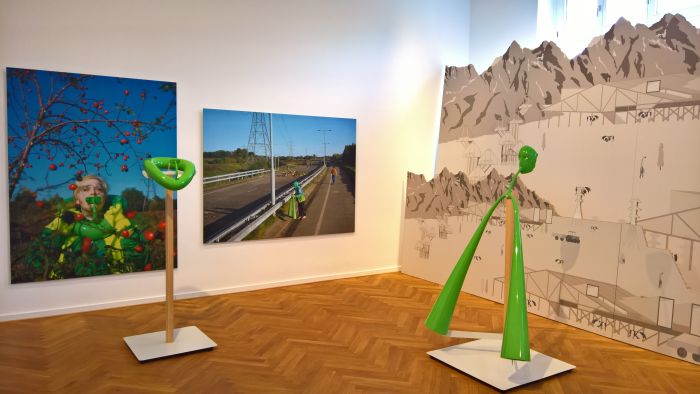
Designs for an Overpopulated Planet by Dunne & Raby, as seen at Food Revolution 5.0. Design for Tomorrow’s Society, Museum für Kunst und Gewerbe Hamburg
Food Consumption 5.0.
One obvious starting point in re-considering our relationship to food is to question what we eat; whereby a popular theme at the moment is a meatless future. A future of which we would very much approve: far too much of our limited resources are invested globally in producing and distributing meat. It’s simply absurd.
Through projects such as Sea-Meat Seaweed by Hanan Alkouh or the mealworm based Falscher Hase by Carolin Schulze, Food Revolution 5.0 presents realistic possible alternatives, possible alternatives which in addition pose questions about the structure of future food production and distribution. With Sea-Meat Seaweed the traditional forms of meat and function and craft of the butcher are maintained, but is that necessary? Is it not better to accept that our future society will evolve new traditions? While Falscher Hase employs a 3D printer. Why will we have to 3D print food? Is that necessary? Really?
In addition to questioning what we eat Food Revolution 5.0 also explores our relationships to food through how we eat, how much we eat and how much food we buy. Through projects such as Volumes by Marije Vogelzang, a series of physical objects which trick the brain into thinking there is more food on your plate than there really is; the photo series One Third by Klaus Pichler which highlights food waste and thus how much food is produced and bought; and Maze Cover by José de la O which slows down the rate at which we can eat, and so gives your brain time to catch up with your stomach and tell you that you’re full, Food Revolution 5.0 forces us to consider our individual relationships to food, and for all to question the validity and sustainability of those relationships.
And yes, that also means you, the self-professed foodie and you the self-aggrandising food Instagrammer, and indeed all those who understand eating as an experience, when not a public performance, those who treat food as art rather than nourishment. You’re part of the problem. Just stop it!
A very neat antidote is suggested by the Communal Cooking Landscape concept from Werner Aisslinger, a contemporary arena which makes eating analogue social rather than virtual social, and thus offers a possibility to rescue us from contemporary eating habits; even if we do find his suggestion of kitchen utensils which communicate with one another completely abhorrent. The only communication in a kitchen should be that between those humans and animals present. And shouting at the fool on the radio.

Sea-Meat Seaweed by Hanan Alkouh, as seen at Food Revolution 5.0. Design for Tomorrow’s Society, Museum für Kunst und Gewerbe Hamburg
Food Laboratory 5.0.
As the large number of conceptual projects presented in Food Revolution 5.0 could, should, lead one to believe, the word “Eindhoven” crops up in a lot of the designer biographies; while in others one strongly suspects the word “Eindhoven” will be found.
If that is such a good thing, we’re not so sure. For all its many claims, Design Academy Eindhoven isn’t a contemporary Delphi, rather is representative of one approach to design. Thus it is very pleasing that the final section of the exhibition, the Laboratory, gives other design schools a say. Invariably a much more practical say.
Equally pleasing is the well stocked reading table in the Laboratory which allows visitors the opportunity to deepen their research and follow up those subjects which have aroused the most interest, thus constructively supporting and expanding both the presentation and discussion.
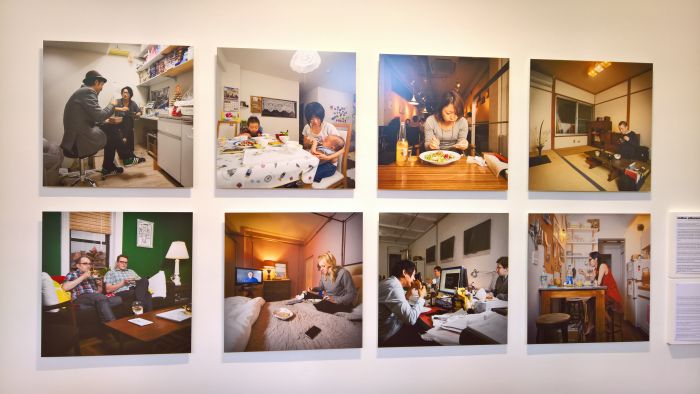
Dinner in NY & Dinner in Tokyo in Miho Aikawa, a photo-documentation of contemporary eating practices, as seen at Food Revolution 5.0. Design for Tomorrow’s Society, Museum für Kunst und Gewerbe Hamburg
Food Discussion 5.0.
Despite the perversion we noted at the beginning it would be a mistake to believe everything was better back in the day. It wasn’t. Things were just differently bad. Regardless of which century or age of mankind you look at we have never had secured, democratic distribution of nutritious food, never had a situation in which people didn’t suffer from hunger and malnutrition. The fact that today we have it differently bad than our ancestors in the 11th, 17th or 19th centuries is due to the ways and means by which consecutive generations have utilised and harnessed new technologies, materials and processes. And as noted above, contemporary science and technology have the power to make everything much, much worse than it currently is.
For us, what is without question better today, and what offers hope of a genuine improvement, is the level of understanding amongst a wide section of the public that things need to change, that not only are our current location and direction wrong, but that we may not even be on the correct road; improved education and more efficient information dissemination giving us an advantage over our ancestors and enabling a wider debate to which we all can, should, contribute.
As an exhibition Food Revolution 5.0 is not the most expansive exhibition in terms of objects presented, its secret lies in its depths, and these the curators leave you to explore for yourself. Through presenting the information in a very blunt fashion, in a way that makes it impossible for you to ignore, and proposing, deliberately, exaggerated solutions which inspire and disgust in equal measure, Food Revolution 5.0 is a welcome contribution to the debate on the future of the food industry, and for all on what we should soweth.
Food Revolution 5.0. Design for Tomorrow’s Society runs at the Museum für Kunst und Gewerbe Hamburg, Steintorplatz, 20099 Hamburg until Sunday October 29th. Full details, including information on the accompanying fringe programme, can be found at: www.mkg-hamburg.de
- Food Revolution 5.0. Design for Tomorrow’s Society at the Museum für Kunst und Gewerbe Hamburg
- Food Revolution 5.0. Design for Tomorrow’s Society at the Museum für Kunst und Gewerbe Hamburg
- Second Livestock by Austin Stewart. Virtual Reality for chickens, as seen at Food Revolution 5.0. Design for Tomorrow’s Society, Museum für Kunst und Gewerbe Hamburg
- Volumes by Marije Vogelzang, as seen at Food Revolution 5.0. Design for Tomorrow’s Society, Museum für Kunst und Gewerbe Hamburg
- Dinner in NY & Dinner in Tokyo in Miho Aikawa, a photo-documentaton of contemporary eating practices, as seen at Food Revolution 5.0. Design for Tomorrow’s Society, Museum für Kunst und Gewerbe Hamburg
- Food Revolution 5.0. Design for Tomorrow’s Society at the Museum für Kunst und Gewerbe Hamburg
- Food Revolution 5.0. Design for Tomorrow’s Society at the Museum für Kunst und Gewerbe Hamburg
- Sea-Meat Seaweed by Hanan Alkouh, as seen at Food Revolution 5.0. Design for Tomorrow’s Society, Museum für Kunst und Gewerbe Hamburg
- One Third by Klaus Pichler, as seen at Food Revolution 5.0. Design for Tomorrow’s Society, Museum für Kunst und Gewerbe Hamburg
- Food City Hamburg. Food in the city for the city, a project from the HafenCity University Hamburg, as seen at Food Revolution 5.0. Design for Tomorrow’s Society, Museum für Kunst und Gewerbe Hamburg
- Intimacy of Food and War by Isabel Mager, as seen at Food Revolution 5.0. Design for Tomorrow’s Society, Museum für Kunst und Gewerbe Hamburg
- Designs for an overpopulated planet by Dunne & Raby, as seen at Food Revolution 5.0. Design for Tomorrow’s Society, Museum für Kunst und Gewerbe Hamburg
- Falscher Hase by Carolin Schulze, as seen at Food Revolution 5.0. Design for Tomorrow’s Society, Museum für Kunst und Gewerbe Hamburg
- The laboratory and library, as seen at Food Revolution 5.0. Design for Tomorrow’s Society, Museum für Kunst und Gewerbe Hamburg
- Communal Cooking Landscape by Werner Aisslinger, as seen at Food Revolution 5.0. Design for Tomorrow’s Society, Museum für Kunst und Gewerbe Hamburg
Tagged with: Food, Food Revolution 5.0, Hamburg
